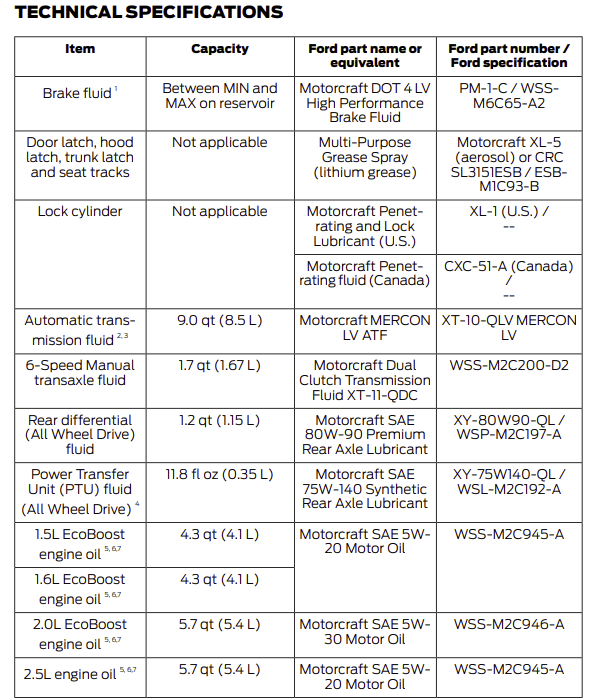Hey there, folks! Today, we’re going under the hood of one of North America’s most popular midsize cars, the 2014 Ford Fusion. Sleek, sporty, and fuel-efficient, this car is a darling to many, and there’s no doubt why. Whether it’s the 1.5L or 1.6L EcoBoost, the 2.5L, or the 2.0L EcoBoost, this baby packs a punch where it matters.
But it’s not all about how the car looks or even what it’s got under the hood. It’s about taking care of that engine so it lasts. And one of the most crucial elements of engine care is choosing the right oil. Believe it or not, your engine oil can make a world of difference.
It reduces friction, prevents overheating, cleans the engine, and protects it from rust and corrosion. Use the wrong type, and your engine’s performance may suffer, and you might even cause significant damage over time.

Overview of 2014 Ford Fusion’s Engine Variants
| Engine Variant | Description |
|---|---|
| 1.5L EcoBoost | The 1.5L EcoBoost engine provides a great balance of fuel efficiency and performance. With turbocharging and direct injection technology, it delivers lively performance without compromising on fuel economy. |
| 1.6L EcoBoost | Slightly more powerful, the 1.6L EcoBoost engine also uses turbocharging and direct injection technology to deliver better horsepower and torque while maintaining a high level of fuel efficiency. |
| 2.5L | This is the standard base engine in the 2014 Ford Fusion. This naturally-aspirated 2.5L four-cylinder engine provides reliable performance and good fuel economy, making it a great choice for daily commuting. |
| 2.0L EcoBoost | The 2.0L EcoBoost is the top-tier engine in this lineup, offering the most powerful performance. With the added boost from turbocharging, it has higher horsepower and torque, delivering a sportier and more dynamic driving experience. |
Each of these engines provides a unique blend of performance and fuel efficiency. The 1.5L and 1.6L EcoBoost engines provide a great combination of power and fuel efficiency, making them excellent choices for drivers who want a little extra oomph without compromising on fuel economy.
The 2.5L engine is a reliable workhorse, providing steady power and good fuel economy for everyday driving.
The 2.0L EcoBoost is a performance-oriented option, offering a higher level of power for a more exhilarating driving experience. Its increased horsepower and torque make it stand out in the lineup.
What Type Of Oil Does A 2014 Ford Fusion Use?
Every engine is a little different, and the 2014 Ford Fusion is no exception. Based on the manufacturer’s recommendations, here’s what you should be using for each engine type:
- 1.5L EcoBoost: The manufacturer recommends using Motorcraft SAE 5W-20 Motor Oil with this engine, and it requires about 4.3 qt (4.1 L) during a complete oil and filter change.
- 1.6L EcoBoost: Just like the 1.5L EcoBoost, the manufacturer also recommends Motorcraft SAE 5W-20 Motor Oil for the 1.6L EcoBoost. A full oil and filter change also takes 4.3 qt (4.1 L).
- 2.5L: Ford recommends using Motorcraft SAE 5W-20 Motor Oil for this engine. However, this one requires a bit more oil – 5.7 qt (5.4 L) to be precise.
- 2.0L EcoBoost: Last but not least, the high-performance 2.0L EcoBoost calls for Motorcraft SAE 5W-30 Motor Oil, with a capacity of 5.7 qt (5.4 L) during an oil and filter change.

There’s a reason why the manufacturer provides specific recommendations for each engine type. The engineers who designed your engine selected the ideal oil type based on various factors, including the engine’s operating temperature, the materials used in its construction, and the clearances between moving parts.
Ignoring these recommendations can lead to increased engine wear, reduced performance, and potentially even severe damage. So, folks, it’s always best to stick to what the manufacturer suggests for the best engine health and longevity.
Suggestions for Top Oil Brands
Now, when it comes to brands, Motorcraft is recommended because it’s Ford’s own brand. However, if it’s not available, other high-quality brands such as Castrol, Mobil 1, Pennzoil, and Valvoline also produce SAE 5W-20 and SAE 5W-30 oils that meet or exceed Ford’s specifications.
Remember, the key here is quality. Always opt for high-quality oil to keep your Ford Fusion running smoothly and efficiently. After all, your car is only as good as the care you give it!
Oil Change Intervals and Maintenance for 2014 Ford Fusion
Alright, folks, while it’s crucial to use the right type of oil, it’s equally important to change it at the right time. The general guideline is to change your engine oil every 5,000 miles or six months, whichever comes first. However, if your Fusion mostly sees stop-and-go traffic or short trips, you might want to change it more frequently as these conditions can degrade the oil faster.
Description of Ford’s Intelligent Oil-Life Monitor
Now, here’s where Ford makes your life easier. The 2014 Ford Fusion comes with an Intelligent Oil-Life Monitor. This nifty system takes into account your vehicle’s operating conditions to determine when you should change the oil. It calculates based on the engine’s running time, mileage, and temperature data. When it’s time for a change, you’ll see a message pop up on the information display.
When you change your oil, don’t forget about the oil filter. A dirty filter can’t do its job of capturing dirt and contaminants effectively. So, when you’re draining out that old oil, spin off the old filter, lubricate the new one’s gasket with a bit of new oil, and then tighten it according to the instructions on the box.
After the oil and filter change, don’t forget to reset the Intelligent Oil-Life Monitor. Here’s how: switch on the ignition without starting the engine, press the brake and accelerator pedals simultaneously, hold them down for about 25 seconds, and the system will reset. The “oil change required” message should no longer be displayed.
Between oil changes, keep an eye on your oil level and its color. Use the dipstick in your engine, wipe it off, put it back in, then pull it out to check the level. It should be between the min and max marks. As for the color, fresh oil has a clear, amber color. Over time, it’ll darken, which is normal. But if it’s a milky color or has particles in it, you should get your vehicle checked.
Potential Signs of Oil-Related Issues
Finally, be aware of the signs of potential oil-related issues, like an oil smell inside your car, exhaust smoke, or unusually loud engine noise. And, of course, if you see the oil pressure warning light, stop your vehicle as soon as it’s safe, and check the oil level.
Remember, regular oil changes are a small price to pay for the longevity and health of your Fusion’s engine. It’s the best way to ensure your car stays as reliable and efficient as the day you bought it!










